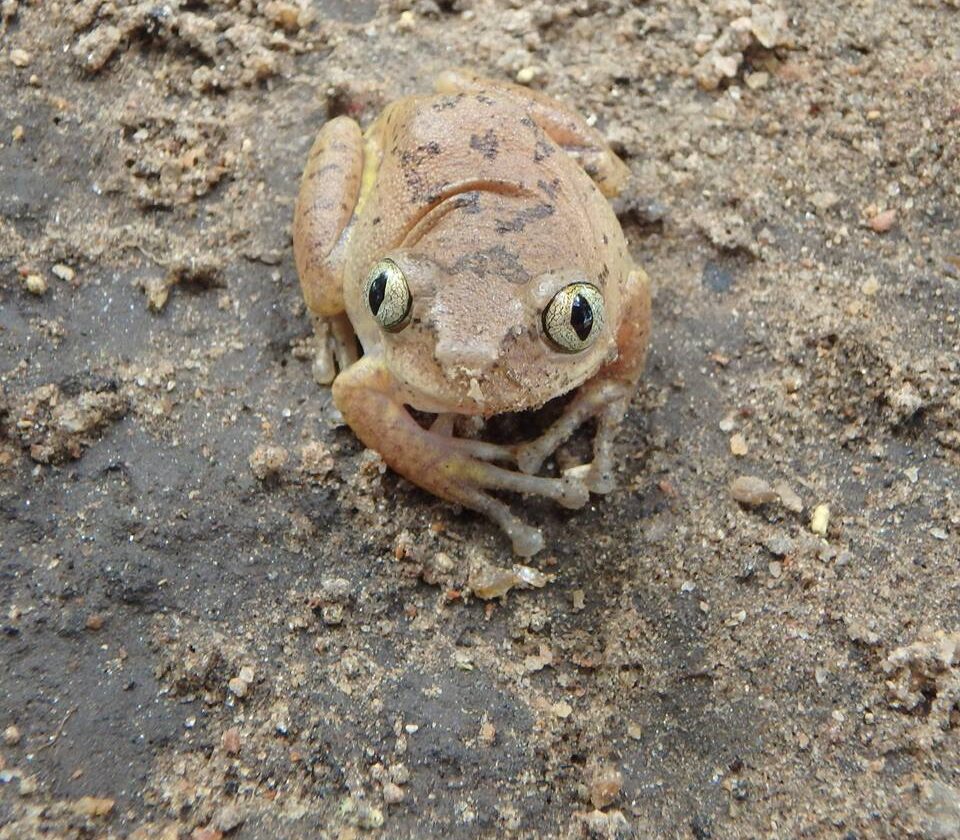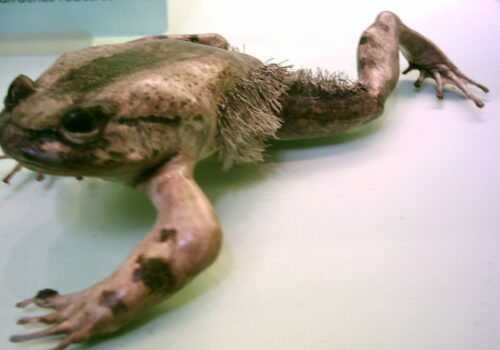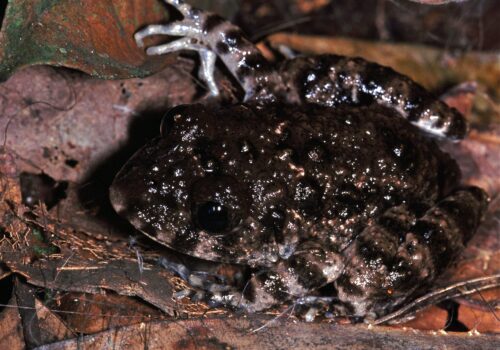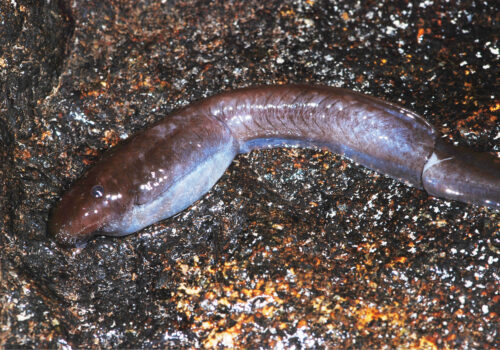- Introduction: A Glimpse into the Secretive Life of Leptopelis broadleyi
- Taxonomy and Classification: Understanding Its Place in Nature's Puzzle
- Natural Habitat: Montane Realms and Moist Forest Secrets
- Physical Characteristics: Master of Camouflage and Graceful Adaptation
- Behavior and Life Cycle: Serenades, Survival, and Subtlety
- Ecological Role: Quiet Guardians of Forest Harmony
- Threats and Conservation Status: Fragility in a Changing World
- Cultural and Scientific Significance: Stories and Discoveries of Tiny Forest Guardians
- Conclusion: A Call for Action and Awareness
Introduction: A Glimpse into the Secretive Life of Leptopelis broadleyi#
The gentle rustling of leaves beneath the dense canopies of East Africa hides countless marvels. Among these, quietly resting atop a broad leaf, sits a subtle yet fascinating creature, the Broadley’s Forest Tree Frog, known scientifically as Leptopelis broadleyi. Small, elusive, and perfectly adapted to its forest environment, this amphibian is easy to overlook but plays a vital role in its ecosystem. As we lift the leaves and mossy logs of Africa’s humid montane forests, the vivid life of Leptopelis broadleyi begins to unfold, revealing a world of delicate connections, intricate behaviors, and profound ecological importance.
Named in honor of renowned African herpetologist Dr. Donald G. Broadley, this extraordinary amphibian represents the beauty of evolutionary specialization. While numerous frog species populate Africa’s lush terrains, few encapsulate the remarkable interplay of adaptation and environment as elegantly as Leptopelis broadleyi.
Taxonomy and Classification: Understanding Its Place in Nature’s Puzzle#
To understand any organism, we must first place it within its vast evolutionary context. Leptopelis broadleyi belongs to the diverse family Arthroleptidae, characterized by unique arboreal (tree-dwelling) frogs primarily distributed across Sub-Saharan Africa. Within this frog-rich family, the genus Leptopelis stands out due to its intriguing diversity, including over 50 distinct species.
Within its genus, Leptopelis broadleyi belongs to a closely related group distinguished largely by subtle physical and acoustic variations. Its nearest relatives, including species like Leptopelis flavomaculatus and Leptopelis uluguruensis, share overlapping geographical ranges and habitats, yet each exhibits distinct evolutionary traits honed through millions of years under unique environmental pressures.
Natural Habitat: Montane Realms and Moist Forest Secrets#
Leptopelis broadleyi calls the mountainous forests of East Africa its home, primarily inhabiting regions within Tanzania, Malawi, and northeastern Zambia. Within these elevated rainforests, shrouded in mist and adorned with emerald moss, ferns, orchids, and towering native trees, this amphibious dweller thrives.
The Perfect Microhabitat#
Walking through these montane forests is akin to entering a living tapestry, a habitat intricately woven with life. While occasional seasonal rains replenish life beneath the canopy, humidity remains consistently high. This moisture creates ideal conditions for Leptopelis broadleyi, which relies significantly on damp foliage, logs, and vegetation near slow-moving streams for breeding and foraging.
At night, the forest becomes a symphony of sounds. Amidst the calls of nocturnal insects, elusive mammals, and birds roosting high overhead, the subtle call of male Broadley’s Forest Tree Frogs emerges, rising gently above the nocturnal chorus—a soft, melodious “chirrup” resonating in the humid air.
Physical Characteristics: Master of Camouflage and Graceful Adaptation#
Leptopelis broadleyi typically presents itself as a small to moderately sized frog, with adults averaging between 3.5–5 centimeters in length. Its skin, incredibly smooth and moist, sports muted coloration patterns ranging from greenish-brown to olive or occasionally brighter, leaf-like chromatism, perfectly matching the colors of its leafy abode.
A Living Leaf—Nature’s Artistry#
Perhaps most remarkable about Leptopelis broadleyi is how its form blends seamlessly into the vegetation upon which it perches. Its cryptic coloration, combined with a sleek, flattened body shape and perfectly shaped fingers adapted for tree climbing, transforms it into a master of disguise. Its large, round eyes, bulging slightly and positioned advantageously on its head, further aid in predator avoidance and prey detection.
This carefully honed camouflage not only serves as protection from predators such as snakes and birds but allows the frogs to ambush small, unwary insect prey that land unknowingly nearby.
Behavior and Life Cycle: Serenades, Survival, and Subtlety#
A Nocturnal Lifestyle#
Primarily nocturnal, Leptopelis broadleyi emerges beneath the protective cloak of darkness to forage. Its diet consists mainly of insects—from moths to crickets to soft-bodied arthropods—that frequent its habitat. Employing stealth and precision, it captures prey swiftly using a sticky tongue, a remarkable evolutionary adaptation shared with many other frogs.
The Mating Call: Nature’s Quiet Serenade#
During breeding seasons, males congregate near preferred breeding ponds or shallow streams, gently serenading potential mates with a delicate chorus. These calls—soft whistles or rhythmic chirps repeated periodically—are just audible enough to attract the attention of receptive females without drawing excessive predator attention.
Eggs are typically laid in concealed, moist locations along streams or temporary pools formed by rain. Tadpoles emerge, greyish brown and inconspicuous, and undergo a delicate developmental transition, gradually gaining limbs, lungs, and the ability to live on land—another wondrous stage in nature’s endless ballet of transformation.
Ecological Role: Quiet Guardians of Forest Harmony#
Leptopelis broadleyi, though small and unobtrusive, significantly impacts its ecosystem. As insectivores, they help regulate insect populations, providing natural pest control within these sensitive forest habitats. Their presence—and absence—is particularly valuable as indicators of ecosystem health given their sensitivity to environmental changes and pollutants.
Additionally, being prey for numerous predators, these tree frogs weave themselves deeply into their ecosystem’s complex food web. Snakes, small mammals, owls, and even larger frogs may occasionally prey upon them, highlighting their interconnectedness within the montane forest floor and canopy ecological matrix.
Threats and Conservation Status: Fragility in a Changing World#
Like many specialized amphibians, Leptopelis broadleyi faces significant environmental pressures. Habitat degradation driven by deforestation, logging operations, agricultural expansion, and human encroachment into protected forests constitutes the primary threat to its survival. Combined with climate change—which alters rainfall patterns, seasonal cycles, and habitat microclimates—these frogs may struggle significantly in future decades.
Current Conservation Efforts#
Presently, Leptopelis broadleyi is classified as Least Concern by the International Union for Conservation of Nature (IUCN), though ongoing monitoring remains critical. Localized protections, such as preserving intact montane forests and promoting community-based conservation initiatives, provide essential safeguards ensuring continuous survival and biodiversity.
Cultural and Scientific Significance: Stories and Discoveries of Tiny Forest Guardians#
While Leptopelis broadleyi may not be as culturally celebrated as larger, more charismatic fauna, indigenous communities in Tanzania and Malawi recognize these frogs as important indicators of healthy and abundant ecosystems. Their melodic nighttime calls have become symbolic of undisturbed, thriving forests.
Scientifically, studying amphibians like Leptopelis broadleyi contributes significantly to understanding environmental health, biodiversity trends, climate change impacts, and amphibian evolution in Africa.
Conclusion: A Call for Action and Awareness#
Brimming with fascinating adaptations, nuanced behaviors, and ecological importance, Leptopelis broadleyi offers a window into the hidden complexities of Africa’s montane forests. Protecting this delicate amphibian aligns rigorously with broader ecosystem conservation objectives, underscoring how interconnected life truly is.
Exploring the captivating existence of Leptopelis broadleyi inspires us all—from casual nature lovers to dedicated conservationists—to appreciate and protect the subtle beauties nestled quietly within Earth’s lush landscapes. May it continue its gentle serenades for generations yet to come.














